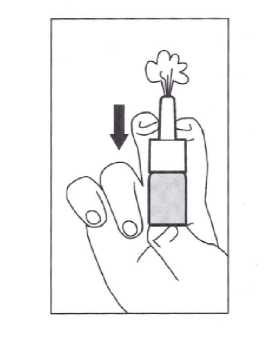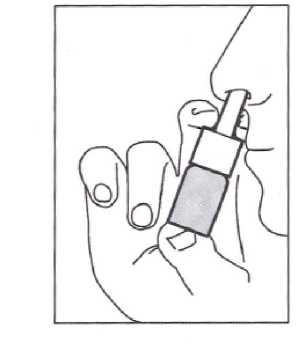Rhinocort Aqua 64 Micrograms Nasal Spray
Rhinocort® Aqua, 64 micrograms, Nasal Spray
(budesonide)
Read all of this leaflet carefully before you start using this medicine.
• Keep this leaflet. You may need to read it again.
• If you have any further questions, ask your doctor or pharmacist.
• This medicine has been prescribed for you. Do not pass it on to others. It may harm them, even if their symptoms are the same as yours.
• If any of the side effects get serious, or if you notice any side effects not listed in this leaflet, please tell your doctor or pharmacist.

Patient Information Leaflet
Your medicine is known by the above name but will be referred to as Rhinocort Aqua throughout this leaflet
In this leaflet:
1) What Rhinocort Aqua is and what it is used for
2) Before you use Rhinocort Aqua
3) How to use Rhinocort Aqua
4) Possible side effects
5) How to store Rhinocort Aqua
6) Further information
1) What Rhinocort Aqua is and what it is used for
Rhinocort Aqua contains a medicine called budesonide. This belongs to a group of medicines called corticosteroids.
• Corticosteroids help to prevent inflammation.
• Rhinocort Aqua is used to treat the effects of allergies, such as hay fever, and inflammation inside the nose (rhinitis).
• It can also stop these effects from coming on.
• It is also used to treat small growths inside the nose (nasal polyps).
2) Before you use Rhinocort Aqua Do not use Rhinocort Aqua if:
• You are allergic (hypersensitive) to budesonide or any of the other ingredients of Rhinocort Aqua (see Section 6: Further information).
If you are not sure if this applies to you, talk to your doctor or pharmacist before using Rhinocort Aqua.
Take special care with Rhinocort Aqua
Before you use Rhinocort Aqua, tell your doctor or pharmacist if:
• You have TB (tuberculosis).
• You have a chest infection.
If you are not sure if either of the above apply to you, talk to your doctor or pharmacist before using Rhinocort Aqua.
Taking other medicines
Please tell your doctor or pharmacist if you are taking, or have recently taken, any other medicines. This includes medicines that you buy without a prescription and herbal medicines.
In particular, talk to your doctor if:
• You are taking medicines to treat fungal infections (such as itraconazole or ketoconazole).
• You have been taking steroid tablets. Your doctor may ask you to take fewer of them after starting to use Rhinocort Aqua. If you notice any unusual effects as a result of this, tell your doctor.
• You are taking oestrogens and contraceptive steroids.
Pregnancy and breast-feeding
• If you are pregnant or planning to get pregnant, talk to your doctor or pharmacist before using Rhinocort Aqua.
• If you get pregnant while using Rhinocort Aqua, talk to your doctor straight away.
• If you are breast-feeding, talk to your doctor or pharmacist before using Rhinocort Aqua.
3) How to use Rhinocort Aqua
Always use Rhinocort Aqua exactly as your doctor or pharmacist has told
you. You should check with your doctor or pharmacist if you are not sure.
Read the label to remind you of what they said.
How much Rhinocort Aqua to use Allergies such as hay fever
• The usual dose for adults and older people is two sprays of Rhinocort Aqua into each nostril in the morning. Alternatively, your doctor may ask you to take one spray of Rhinocort Aqua into each nostril every morning and evening.
• This may be reduced by your doctor once your symptoms have improved.
It is important to use Rhinocort Aqua regularly. Try to use it before you come into contact with whatever causes the allergy. For example, pollen is what causes hay fever, so you will be more at risk outdoors.
Nasal polyps
• The usual dose is one spray of Rhinocort Aqua into each nostril every morning and evening.
Treatment for allergies such as hay fever and for nasal polyps can continue for up to 3 months.
You may not notice any effects of the medicine for the first few days. Don't stop taking it. Keep taking the medicine as you have been told to. If you still feel no different after a few more days, talk to your doctor.
Instructions for use
1. Priming the nozzle
Before using Rhinocort Aqua for the first time, you must prime the nozzle (that is, fill it with the medicine). To do this:
• Shake the bottle and remove the protective cap.
• Hold the bottle upright as shown in the picture.
• Pump the nozzle up and down several times (5 to 10 times), spraying into the air until you see an even mist.
The priming effect remains for about 24 hours. If you leave a gap of more than a day before the next dose, you will need to prime the nozzle again. This time spray it into the air just once.
2. Using Rhinocort Aqua
Blow your nose. Shake the bottle. Remove the protective cap.
Hold the bottle as shown in the picture.
Put the tip of the nozzle into your nostril, as shown. Spray once (or more if the doctor has told you to). Use the spray in the other nostril in the same way. Note, you do not need to breathe in at the same time as you spray.
Wipe the nozzle with a clean tissue and replace the protective cap. Store the bottle in an upright position.

Rhinocort Aqua is not recommended for use in children.
3. Cleaning the nozzle
It is best to clean the plastic nozzle of Rhinocort Aqua regularly. Also clean it if you notice that the spray is not coming out as it should. If this happens, first check the nozzle is primed with medicine (see “Priming the nozzle” above). If after priming the nozzle again the pump is still not working, clean the nozzle as follows:
• Remove the plastic nozzle with a clean tissue and wash it in warm (not hot) water.
• Rinse the nozzle thoroughly, dry it and then replace it on the top of the bottle. Never try to unblock the nozzle by using a pin or other sharp object.
• Prime the nozzle again (by filling it with medicine) before use.
Additional information about using Rhinocort Aqua
• If you are about to have an operation or during times of stress, please tell the doctor that you use Rhinocort Aqua. The doctor may ask you to take steroid tablets as well, particularly if you have been taking a high dose of Rhinocort Aqua, or a similar medicine, for a long time.
• Eye problems: If you have an allergy which is also causing eye problems, you may need to take another medicine as well.
• Long-term treatment: If you use Rhinocort Aqua every day for a long time, your doctor will need to have a regular check of the inside of your nose (the nasal mucosa).
• Children and adolescents: If a child or adolescent is prescribed Rhinocort Aqua and uses a high dose for a long time, the doctor will need to check how well they are growing.
If you use more Rhinocort Aqua than you should
It is important that you take your dose as stated on the pharmacist's label or as advised by your doctor. You should use only as much as your doctor recommends; using more or less may make your symptoms worse.
If you take too many doses of Rhinocort Aqua, talk to your doctor or pharmacist straight away.
If you forget to take Rhinocort Aqua
If you forget to take a dose, take it as soon as you remember. However, if it is almost time to take the next dose, wait until then. Do not take a double dose to make up for a forgotten dose.
4) Possible side effects
Like all medicines, Rhinocort Aqua can cause side effects, although not everybody gets them.
If any of the following happen to you, stop using Rhinocort Aqua and talk to your doctor straight away:
• Skin rash, itching, lumpy rash (hives), blistering of the skin. Swelling of your face, lips, tongue or throat (this may make it difficult to swallow). These are uncommon, affecting less than 1 in 100 people.
• In addition to the above, sudden wheezing and/or feeling faint may occur. It is not known how often these occur; however they are very unlikely.
If any of the above occurs, you may be having an allergic reaction.
Other possible side effects:
Common (affects less than 1 in 10 people)
• Occasional sneezing, dry nose, or stinging in your nose. These can happen straight after using Rhinocort Aqua.
• Slight bleeding from the nose.
Rare (affects less than 1 in 1000 people)
• Slowing of the rate of growth of children and adolescents. Corticosteroids can affect the normal production of steroid hormones in your body, particularly if you use high doses for a long time.
The above is much less likely to happen with inhaled corticosteroids than with corticosteroid tablets.
Unknown (cannot be estimated from available data)
• Glaucoma (increased pressure in the eye).
• Cataract
Reporting of side effects If you get any side effects, talk to your doctor, pharmacist or nurse. This includes any possible side effects not listed in this leaflet. You can also report side effects directly via the Yellow Card Scheme at: www.mhra.gov.uk/yellowcard. By reporting side effects, you can help provide more information on the safety of this medicine.
5) How to store Rhinocort Aqua
• Keep all medicines out of the sight and reach of children.
• Do not store above 30°C.
• Do not freeze or store in the fridge
• Keep the bottle in an upright position.
• Do not use Rhinocort Aqua after the expiry date which is stated on the label and carton after ‘EXP'. The expiry date refers to the last day of that month.
• Use within 2 months of opening the bottle. You may find it helpful to write on this leaflet when you first opened the bottle:
Date bottle opened...............................................
• If the nasal spray becomes discoloured, shows any other signs of deterioration you should seek the advice of your pharmacist who will tell you what to do.
• Medicines should not be disposed of via wastewater or household waste. Ask your pharmacist how to dispose of medicines no longer required. These measures will help to protect the environment.
6) Further information What Rhinocort Aqua contain
• The active ingredient is budesonide. Rhinocort Aqua 64 micrograms contains 64 micrograms of budesonide in each spray.
• The other ingredients are disodium edentate, potassium sorbate (E202), glucose (anhydrous), microcrystalline cellulose (E460), sodium carboxymethyl cellulose (E466), polysorbate 80 (E433), hydrochloric acid and purified water.
What Rhinocort Aqua looks like and contents of the pack
A 10ml brown/amber glass bottle containing a white to off white viscous solution. The bottle is fitted with a white spray pump that comes with a dark brown protective cover.
Each bottle of Rhinocort Aqua contains 120 sprays Who makes and repackages your medicine?
PL 10383/2079 |PQM|
Your medicine is manufactured by AstraZeneca AB, S-151 85 Sodertalje, Sweden. Procured from within the EU and repackaged by the Product License holder: Primecrown Ltd., 4/5 Northolt Trading Estate, Belvue Road, Northolt, Middlesex, UB5 5QS.
Leaflet date: 31.03.2014
Rhinocort is a registered trademark of the AstraZeneca group of companies.
Very rare (affects less than 1 in 10,000 people)
• Sore patches on the inside of the nose.
• Perforation of the membrane separating the nostrils (the nasal septum).
• Severe allergic reaction.